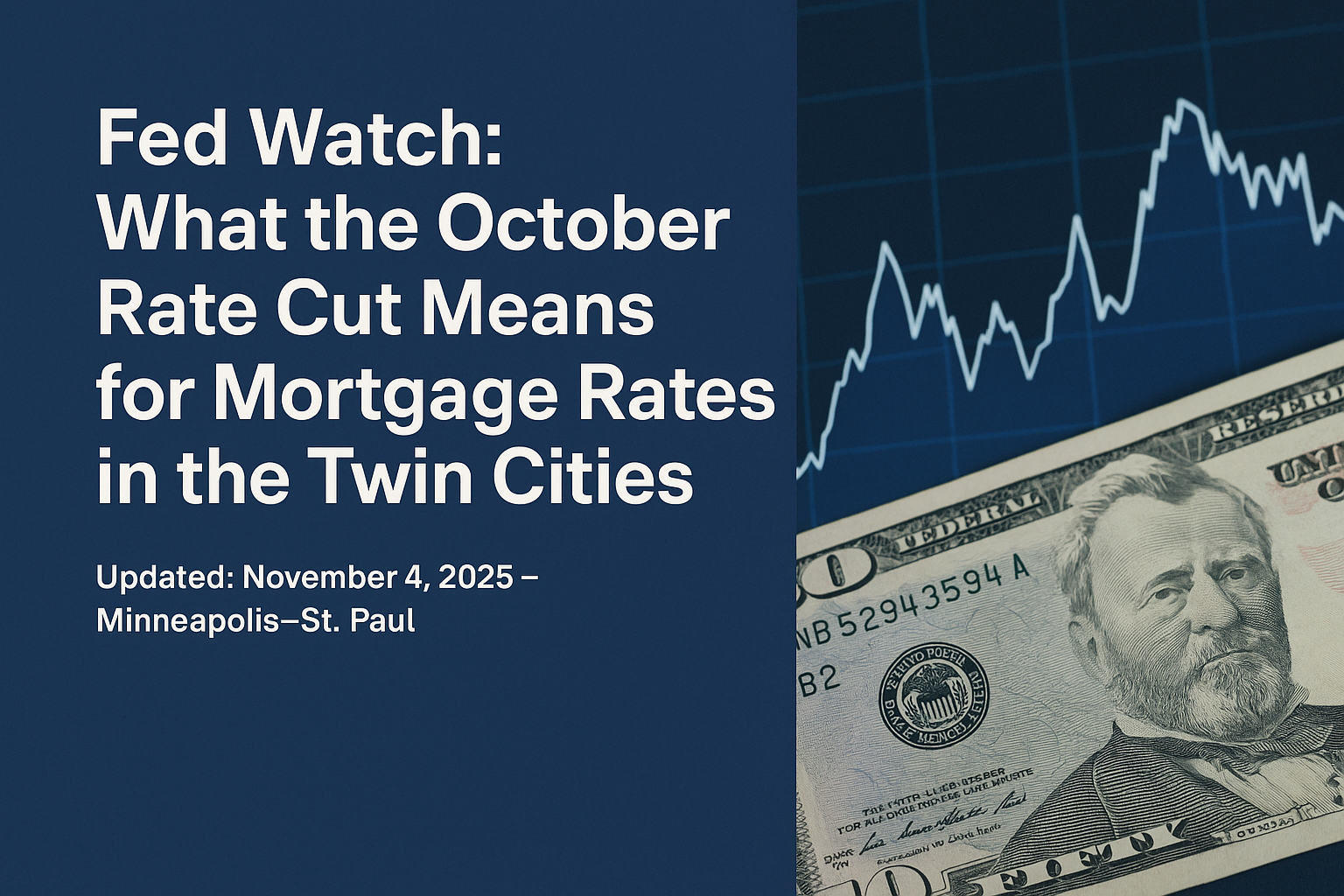Fed Watch: What the October Rate Cut Means for Mortgage Rates in the Twin Cities
Updated: November 4, 2025 — Minneapolis–St. Paul
The headline
On October 29, 2025, the Federal Reserve lowered the federal-funds target range by 0.25% to 3.75%–4.00%. Fed officials signaled they’ll monitor upcoming economic data before deciding on another potential move in December.
The adjustment came in response to a cooling labor market and signs that inflation pressures, while easing, remain elevated. The central bank’s tone emphasized caution — aiming to balance job growth with continued progress on inflation.
What the Fed controls vs. what you pay
The Fed’s decision primarily affects short-term rates — things like home equity lines of credit, credit cards, and adjustable-rate loans. However, mortgage rates are driven by a different set of factors, including the yield on the 10-year U.S. Treasury note and broader investor expectations about inflation and economic growth.
That’s why mortgage rates don’t always drop right after a Fed cut. In fact, after this latest decision, 10-year Treasury yields initially rose as investors digested mixed economic data, keeping mortgage rates relatively steady instead of falling sharply.
Where mortgage rates stand right now
As of early November, 30-year fixed mortgage rates have been hovering in the mid-to-high 6% range. That’s down from the peaks seen earlier this fall but still higher than many buyers experienced in the last few years. Daily rate movements remain volatile as markets respond to economic reports and the Fed’s messaging.
Twin Cities snapshot: buyer activity and showings
In the Twin Cities, modest rate improvements through October helped bring some renewed energy to the market. Minneapolis Area REALTORS® reported stronger showing activity, increased new listings, and a gradual pickup in pending sales as buyers adjusted to the “new normal” for borrowing costs.
Key takeaways for Minnesota buyers & sellers
- Fed cuts don’t automatically lower mortgage rates. Mortgage pricing is tied to bond yields and inflation expectations more than the Fed’s overnight rate.
- Expect continued volatility. With inflation and employment data still mixed, rate swings from week to week are likely through the end of the year.
- Even small dips help. A drop of just 0.25% in rates can improve buying power and monthly affordability—especially when paired with a seller credit or buydown program.
- Sellers can get creative. Offering a temporary rate buydown or closing cost assistance can make listings more attractive without major price cuts.
What to watch next
- The 10-year Treasury yield — the best indicator for where mortgage rates might go next.
- Upcoming inflation and jobs reports, which will influence the Fed’s December decision.
- Weekly mortgage rate updates from Freddie Mac and local market trends in showings and pendings.
Bottom line for the Twin Cities
The Fed’s October rate cut is a step toward easing policy, but mortgage rates will continue to move based on broader market forces. If a home fits your goals and budget, consider locking your rate when you see a favorable window instead of trying to time the market perfectly.
For sellers, better affordability—even in small increments—can help bring more buyers back into the fold heading into winter.
Need help understanding what today’s rates mean for your plans?
I can run a personalized payment scenario using current lender quotes, including 2-1 buydown options and local credit programs. I’ll also provide a micro-market report for your neighborhood to show how buyer activity is shifting with these rate changes.
Request your custom rate analysis · Explore Twin Cities listings


Leave A Comment